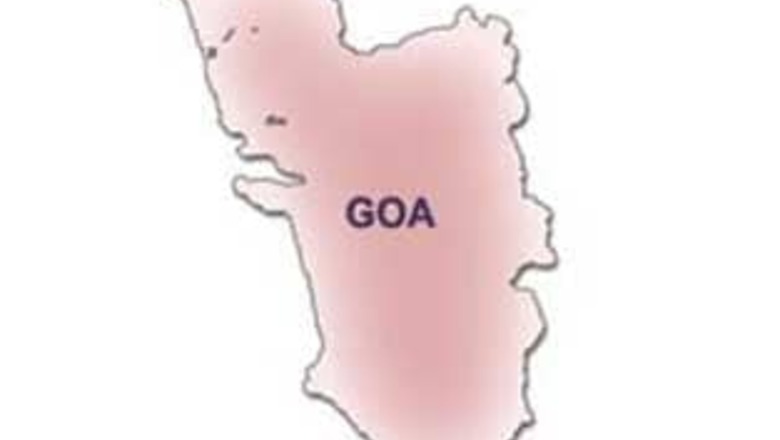
views
The first move came out of the blue. In April 2007, Anil Agarwal, the scrap dealer-turned-metals billionaire who runs Vedanta Resources, paid $1 billion to buy Sesa Goa, an iron-ore company. By all accounts, it appeared like straying from its core business. Vedanta had always been known for copper, aluminium and zinc and this entry into iron ore sent confusing signals to investors. There was also this feeling that Agarwal may have overpaid for Sesa Goa, just to wean it away from rival suitors steel baron Lakshmi Mittal and the Mumbai-based A V Birla group. Vedanta's stock plunged in the next two sessions of trade, reflecting investor disapproval.
The second move came in June 2009. Vedanta acquired another iron ore business in Goa, this time from V S Dempo. A name probably better known for football than iron ore, Dempo nevertheless was welcomed gleefully by Vedanta investors. The stock shot up in value. It was a striking contrast to their mood just two years earlier. It was a clear sign the investors were at last beginning to make sense of Agarwal's game plan.
What had seemed a random acquisition at first glance was actually the first step in a calculated strategy being put in place by Agarwal. Tie in the two acquisitions and the picture becomes clear. Today, the mine-scape of Goa is being changed forever by Agarwal who is slowly but steadily taking over a dominant position there. His interest in iron-ore mining, which started at zero in 2007, is set to reach 50 million tonnes per year by 2012. And this is just one detail in a grand global plan that the shrewd businessman is unraveling.
Ask Anil Agarwal about it and he first underplays it: "I don't look at the nitty gritty of business these days. I focus on the big picture."
Nevertheless, for someone who claims to stay away from the details, Agarwal rattles them off pretty nicely. He wants to become the fifth largest metals and mining company in the world by 2012. He wants India to account for a tenth of all global production of copper, aluminium and zinc and his operations in the country to account for all that share. In iron ore, his latest passion, he wants to control 10 per cent of the world's reserves. His investment bill? Rs 95,000 crore in the lightening span of three years. That's Rs 87 crore each day.
He talks as if these plans are already cast in stone and it is just a matter of execution. Then, what is he going to do as the group patriarch? Agarwal offers a dry laugh for a response. There is work to do, he says. "I am going to see to it that all my plans get executed by their deadlines," he adds. In short, for the first time in nearly three years of thinking big, Agarwal is folding up his sleeves to get to work.
A Formidable Agenda
There is a lot of work — dirty work — to do. His companies have gained notoriety on charges of harming the environment. Most of his projects in India have been extremely controversial, delayed by green concerns and there has been a lot of mystery around the Vedanta brand name.
Agarwal will need to expand his bauxite mining operations in Orissa, which were started early this year after stormy negotiations. He will have to crank up some old iron ore mines, long given up as inefficient. He then has to sew up a pending deal with Asarco, the third largest copper maker in the US, and build power plants with a capacity of 11,000 megawatts. Finally, he has to negotiate a deal with the Indian government to sell its residual stake in Bharat Aluminium Company (Balco) and Hindustan Zinc (HZL), which he bought a few years ago.
A typical businessman would have relied upon his deputies to execute his vision, but not Agarwal. He has padded up and come to the middle of action. The Big-Picture Man is looking at the details and taking spot decisions to speed up execution. And his decisions are making a difference in the energy levels of senior management as well as the rank and file.
Take the scene at Sesa Goa, for instance. For long, the company's production has been stuck at about 10 million tonnes a year. All these years, its management had been saying that at best, it could be expanded to 12 million. Enter Agarwal and the equation changed. He gave them the mandate to increase the output to 25 million tonnes. When awe-struck managers asked him to explain how, he did so with a few touches of his own. He had paid a premium to buy the company and he won't tolerate status quo. Sesa Goa's practice of making only incremental capital expenditure and minor tinkering with mining capacity must go.
He reportedly told them to take Rs 500 crore and replace old equipment, even the ones in good, working condition. This eventually helped crank up production and made 25 million tonnes look like a realistic target. "Agarwal most often has simple solutions for big problems," Sesa Goa's Managing Director P K Mukherjee says. A similar boost with substantial investment is being given to Dempo's facilities too.
The investment banker who advised Dempo on the sale says the facility passed on to good hands. "We had seen what Vedanta Resources had done with Sesa Goa within two years of acquiring it. They have brought aggression, increased production and retained the management," says Vice-President at Ambit Corporate Finance, Ashim Bhuwania.
PAGE_BREAK
In earlier acquisitions like Balco and HZL too, Agarwal had done the unthinkable. He retired workers whose employment was guaranteed earlier by the state and increased production by more than 300 per cent in under three years. Agarwal personally supervised the procurement and planning of capacity addition and the negotiations with the local government. Says a senior executive in Vedanta's copper making arm Sterlite Industries, "His presence changes all equations."
However, there are many glitches in the way. The Goan government has recently come down heavily on mining companies, saying that the fragile ecosystem of the state cannot bear further mining. Though mining employs a lot of the locals, citizens of the tourist haven have been against industries. Anil Agarwal's plan to dig up the state may turn them against him.
Ore to the Fore
Agarwal started his career in the mid-1970s but got into mining for non-ferrous metals only in the 1990s. He realised that the profitability of his telecom cable business fluctuated wildly with the prices of raw materials — copper and aluminium. He decided to control his input costs by making the metals himself. Through the acquisition of Madras Aluminium and by setting up India's first private sector copper smelter, he set the foundation for a mining empire.
Agarwal knew he had stepped into a business that was driven by alternating peaks and troughs. To expand profitably through these price cycles won't be easy. But the world's largest mining company, Rio Tinto, had already practiced a model of buying mining assets cheap during the downward spiral in commodity prices and keeping production costs low enough to make money at the pit bottom. Agarwal chose to follow a similar strategy.
From 1998, when Agarwal made his first awkward hostile bid for Canadian aluminium company Alcan's local arm Indian Aluminium (Indal), he has come a long way. He had initially explored a friendly deal with Indal, but ended up making a hostile bid after picking up a 10 per cent stake. It proved his undoing. Agarwal eventually lost out to arch rival Hindalco.
Just a decade later, that brash style has been replaced by a cool and calculated technique. It was evident in the way he stalked Asarco for more than two years before entering the fray. Agarwal had zeroed in on Asarco, formerly called the American Smelting and Refining Company, before copper prices hit the roof. He could have bought cheaper mines in Africa and South America, but he preferred Asarco because it offered a stable business opportunity in the world's largest and high-premium market.
As the Asarco bidding got hotter, Agarwal virtually walked out of the deal, unlike in Indal where he lost despite being ready to pay more than his original offer. The Asarco bidding, which started at $1.4 billion, went up to $2.7 billion, a price Agarwal considered too expensive. Says Vedanta's chief financial officer Tarun Jain, "It would have hurt our core philosophy of being the lowest cost miner if we had pursued the deal at that time."
But it is now clear that Agarwal never gave up on Asarco. He was just posturing for a better deal. It was at this point that the price spiral in commodities reversed. Copper, which had reached a peak of $8,950 per tonne, started falling with a vengeance going to as low as $2,875. Asarco's cost of production is about $3,300 per tonne. Low prices would be unviable for its operations. Industry observers expected Agarwal to abandon the deal. But for Agarwal, the larger picture was intact. Falling copper prices would also beat down valuations. He chose the twin strategy of linking the purchase price to copper prices and reducing the cost of production after the acquisition. And now with copper over the $4,500 a tonne mark, buying Asarco makes more sense.
Even as the bidding war for Asarco resumed a few months ago with Grupo Mexico offering a lower price but with a higher cash component, Agarwal has been playing his cards shrewdly. He has managed to win over a third bidder, hedge fund Harbinger Capital, to his side. He raised the bid by 10 per cent to a cash-note combination of $1.87 billion. Some analysts believe he is the favourite.
This bold venture would seem contrasting to his own style a few years ago. When commodity prices shot up across the board and rivals were busy making acquisitions, Agarwal sat tight. He used the boom to raise money at fancy premiums but didn't spend much of it. Through equity alone, Vedanta had raised $5 billion in the last five years. Its ability to borrow had also been quite high. "We don't raise capital when we need it. We take it when it is available cheap," says Jain. As later events would show, this bet was a good one.
Toehold in the West
Asarco caters to the premium North American market and hence can command better profit margins than its counterparts can do, say, in India. This base in the US will also come handy as Vedanta eyes the growing market in South America, which offers its own vast reserves of mineral resources.
The structure of the deal is another stroke of shrewdness on the part of Vedanta's top team. They have linked the staggered payment part to copper prices, which means that the acquirer will get some relief if prices fall further. "This is the first time that I have seen a deal of this kind," says Prasad Baji Edelweiss Capital.
"Though deferred payments have been done before, it is for the first time that it will track copper prices. And nine years! You can have two commodity cycles within nine years."
A particular speciality of Anil Agarwal is his capacity to provoke environmental controversies. Mining and metallurgy is dirty business by definition, but Agarwal's track record is filled with more than his share of troubles. He fought a long and bitter battle both at Ratnagiri in Maharashtra and Tuticorin in Tamil Nadu for his smelting project.
PAGE_BREAK
Currently, the dispute over the dislocation of tribal families from Niyamgiri in Orissa for Vedanta's bauxite mining project is still raging. So, analysts worried over the group's entry into another controversial company like Asarco, which faces several environmental cases in the US. But Vedanta says it has taken care. "We have ring-fenced ourselves from legal issues as we are buying only the assets of Asarco and not its liabilities," Anil Agarwal's brother Navin told analysts.
Time to Scale Up
Asarco is but a step in Vedanta's plan to move up the global pecking order in the non-ferrous metals category. It is already the world's fifth largest producer of copper and zinc. It will become Number 2 in copper if and when the deal is completed. It is also on the way to joining the top five integrated aluminium producers and the largest maker of silver in Asia. In the ferrous category, Sesa Goa's expansion will place it among the top 10.
The underlying principle in all of Vedanta's expansions and acquisitions has been the insistence on building large capacities at the minimum cost. In 1986, Agarwal imported a second-hand plant from the US and set up copper cable-making facility in India at a total cost of $1.5 million against the normal cost of almost $10 million. Later, he showed the same obsession with low costs when he acquired state-owned companies in India and turned them around, bought mines and Australia and Zambia and took the first step into the iron ore business.
Peer Review
All the action unfolding at Vedanta represents a complete reversal of roles between the group and its main rivals. It did not have much to show by way of acquisitions during the commodity boom, when Tata Steel was buying Corus in a $13-billion deal and Hindalco was committing $6 billion for Novelis. Abroad, Rio Tinto bought aluminium major Alcan for $38 billion, Xstrata snapped up fellow miner Falconbridge for $25 billion, Mittal Steel bought Arcelor for $34 billion. In each of these acquisitions, the buyer stretched his balance sheet and continues to struggle to raise funds to refinance the loans. Vedanta indulged itself a bit, with the Sesa Goa purchase, but played the waiting game in the non-ferrous side.
Commentators in India contrast Vedanta's Asarco bid with Hindalco's acquisition of Novelis that was largely seen as an attempt by the Aditya Birla company to expand in the high-margin aluminium product segment. True to his style, Agarwal avoided any such "moving up the value chain." Says a former top executive who retired from Sterlite last year: "Anil Agarwal has long emphasised on fundamentally remaining a primary metals producer." Agarwal's safe bet may be protecting him now. Hindalco had to write off the $1.8 billion loss incurred by Novelis, whose portfolio of high-end aluminium products have proved to be more vulnerable in the present slowdown.
Another case, from which Agarwal will take more lessons, is that of Rio Tinto, which has been struggling to sell the packaging unit of Alcan. The acquisition of the aluminium major in 2007 has left Rio Tinto with $40 billion in debt. Rio Tinto has struggled to find a buyer, while the unit's value has fallen from $7 billion two years ago to less than $5 billion now.
Master of Cost
At Asarco, Agarwal's main objective would be to cut production costs by 20 per cent and increase the output by 25 per cent. His track record in achieving such transformation is proven. After Vedanta Resources took over the state-owned Hindustan Zinc in 2002, the latter's cost of production came down from $870 per tonne to $600. At iron-ore miner Sesa Goa, production has increased by over 50 per cent in less than two years of Vedanta's oversight.
With multiple expansion projects and a big acquisition to digest, will Agarwal take it easy and hold back on new deals now? Many expect the billionaire to use the slowdown to spot more opportunities. "He has a good eye for assets and they surely have a well laid-out plan for both, the expansion of their present business and for acquiring new businesses," says a partner at one of the big consulting firms that also advises Vedanta. Another industry old-hand adds, "Though he may not want to go into value-added products, Agarwal does want to be an integrated player in every metal segment he operates in… but with a firm control on resources. Thus it won't be surprising if he goes after copper, bauxite and iron ore mines with a new vigour."
Vedanta's growth in aluminium has gained traction. It overtook rival Hindalco's capacity last year after the first phase of its controversial bauxite mining project in Orissa got commissioned. And it eyes a much bigger capacity. The Orissa project is crucial if this huge leap has to come without compromising the low-cost model. Though Vedanta might have a higher capacity, Hindalco has lower production costs thanks to its fully integrated facility in Uttar Pradesh. The face-off over tribal livelihoods makes analysts sceptical over how soon the mining project would be commissioned.
Agarwal also has a lot of catching up to do in iron ore. Sesa Goa's proposed capacity of 50 million tonnes is peanuts compared to billions of tonnes of reserves that majors like CVRD and BHP Billiton own. Agarwal wants to garner a capacity of 500-600 million tonnes within the next decade and that would mean considerable investments in mines overseas. And with distress selling of mines beginning to happen worldwide, Agarwal will be eager to lay his hands on some.
In the unforgiving desert tracts of Arizona, the state where Asarco got grounded in bankruptcy, they tell the story of the old turkey buzzard. When the shadow of his wings glides over the sands, they know he's just waiting up there for something down below to go up for grabs. The description fits another equally shrewd and patient predator: The boss of Vedanta.










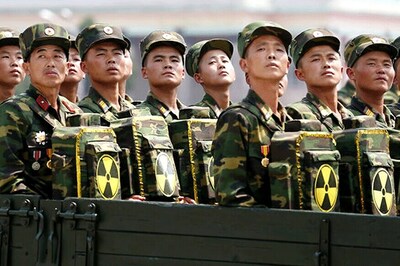



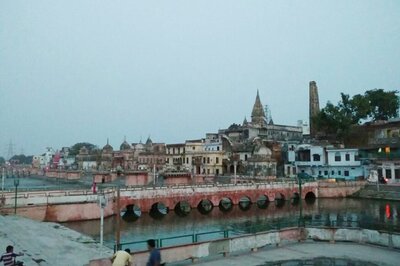



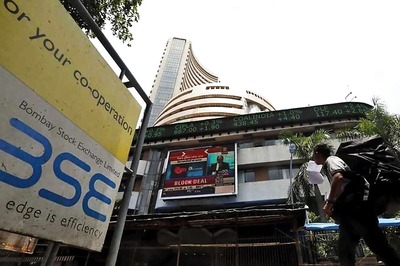
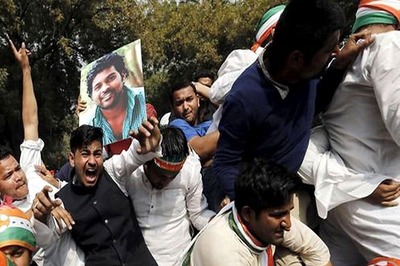
Comments
0 comment